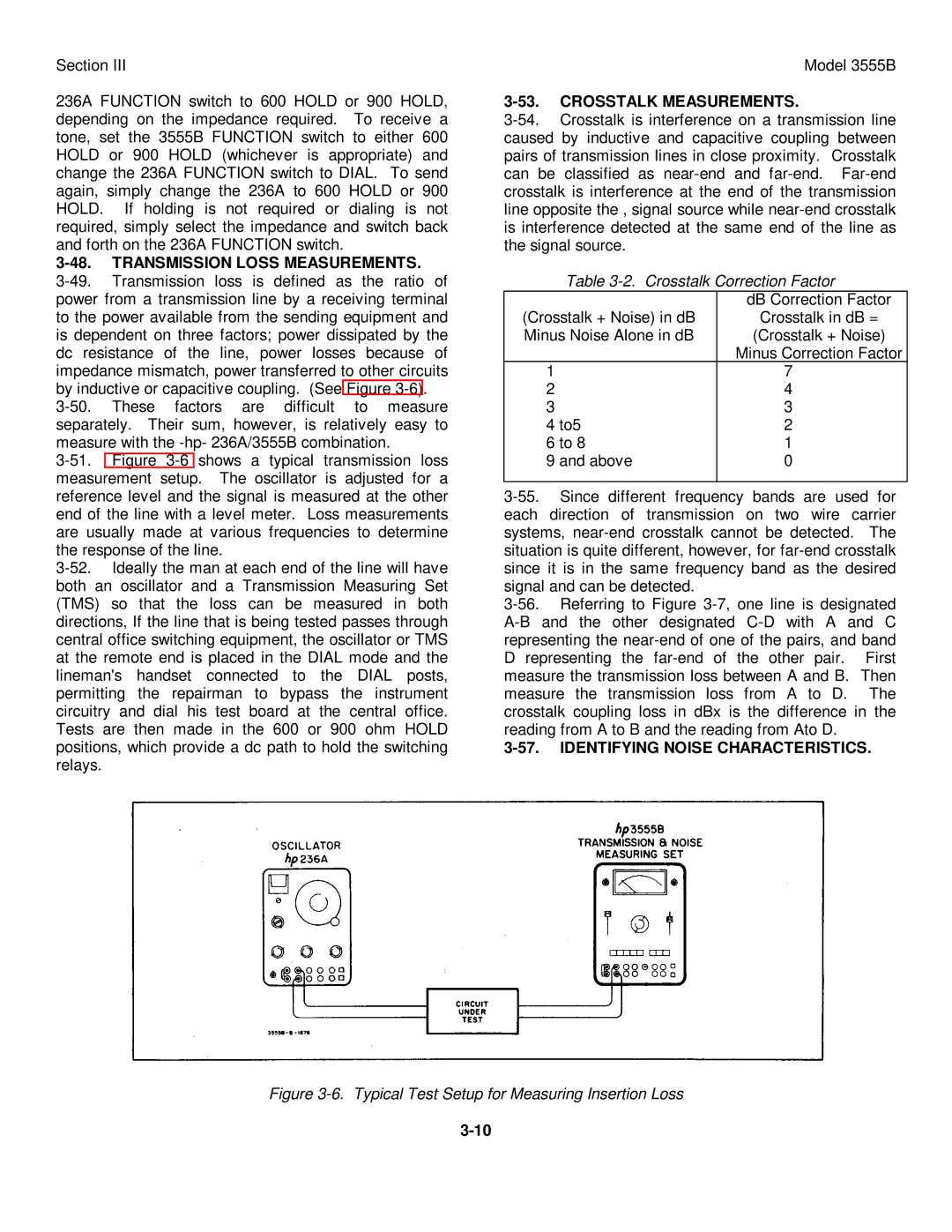HEADQUARTERS, Department of the Army
Technical Manual Headquarters Department of the Army
Reporting Errors and Recommending Improvements
TM 11-6625-2779-14&P
NSN
Replaceable Parts
List of Tables
List of Illustrations
Iii
Section Introduction
Maintenance Forms, Records, and Reports
Scope
Destruction of Army Electronics Materiel
Administrative Storage
Reporting Equipment Improvement Recommendations EIR
Items Comprising an Operable Equipment
Specifications
Voice Frequency Level Measurements 20Hz to 20kHz
Section
Section General Information Introduction
Instrument Identification
Accessory Equipment Supplied
Accessory Equipment Supplied
BAL Modification
Power Requirements
Section Installation Inspection
Warranty Exception
Battery
Installation and Removal of Battery
Cover Removal
Section
Controls Connectors Indicators
Battery
Operating Instructions
Front Panel Controls, Indicators, and Connectors
Front, Side and Rear Pane
Side Panel Controls and Connectors
Level and Noise Measurements
Level Measurements
Page
Noise Measurement
Recorder Compatibility
Applications
Recorder Compatibility Chart
Crosstalk Measurements
Identifying Noise Characteristics
Transmission Loss Measurements
Crosstalk Correction Factor
Measurements in DBC
Input jacks are connected in parallel. If a 600 ohm
Reinstall the set in its case
0dBm
135 BAL
Step Procedure
Level Measurement Noise Metallic Measurements
Example
Noise-to-Ground Measurements Balance Measurement
Recorder Calibration
Transmission Loss Measurement
Block Diagram Description
Section Theory of Operation Introduction
Detailed Circuit Description
Simplified Dial BAT Function
Input Amplifier A3. Schematic No
Range Attenuator A2
Range Attenuator
Setting Attenuation
FILTERS. Schematic No
Pads Used
KHz Flat and Program Weighting Curves
C-MSG and 1SkHz Flat Weighting Curves
Meter AMPLIFIER. Schematic No
DETECTOR. Schematic No
Power Supply and Series Regulator Schematic No
Factory Selected Values
Section Maintenance Introouction
Instrument Recommended Type Required Characteristics Model
BAL Conversion
Function CARRIER, 75 Unbal
Performance Checks
Level Accuracy Checks
TMS, Term
Frequency
Unbal Carrier Accuracy Check
Range
30Hz to 1MHz 100Hz to 600kHz 1MHz to 3MHz
Return Loss Check
20Hz to 20kHz 40Hz to 15kHz 100Hz to 20kHz 100Hz to 15kHz
Return Loss Test Set-Up
Filter Response Checks
Filter Response Checks
MSG dBm 3kHz Flat dBm 15kHz Flat dBm Program dBm
TMS Brdg
Input Balance
Bridging Loss
Input TMS Brdg
Unbal Calibration
Adjustment and Calibration Procedure
Power Supply Check
Attenuator Calibration
Common Mode Adjustment
Frequency Response Adjustment
Balance Check
Troubleshooting Procedures
Assembly Removal
Filter Calibration
Troubleshooting Tree
Front Panel Trouble Analysis
Dial BAT
Range Troubleshooting
Front Panel Troubleshooting
Function Troubleshooting
Front Panel Trouble Analysis Contd
Troubleshooting the Meter Amplifier and Detector
Troubleshooting Input Amplifier
Filter Troubleshooting
Defective Function
Tip to Ring Tip to Ground Ring to Ground
Function Switch Resistance Values
Function Input Jacks DIAL/AC MON Jacks
Brdg Term
10. Resistance Checks
11. Factory Selected Values
Range dBm Pin 1 to Pin 2 to
Carrier 75 Unbal Level Accuracy Check
Performance Check Test Card
Description Check
Carrier 135 BAL Level Accuracy Check
Performance Check Test Card Contd
Carrier 600 BAL Level Accuracy Check
Program
Return Loss Check
Filter Response Checks MSG
Bridging Loss Check
Section Replaceable Parts Introduction
Ordering Information
Replaceable Parts
03555-66507 PC Board Assy function
Replaceable Parts Contd
03555-66508 Board Assy amplifier
A3 Contd
03555-66506 PC Board Assy filter
A4 Contd
Chassis Mounted Components
Chassis Mounted Components Contd
Miscellaneous
Miscellaneous Contd
Fscm
Replacement National Part Stock Number Fscm
Part Number National Stock Number Cross Reference Index
National Stock Number
Page
Model 3555B Appendix a
Code List of Manufacturers
Schematic Diagrams
Circuit Diagrams
Functional Block Diagram
Reference Designations
Section Model 3555B
Functional Block Diagram
7-4
A1 Function Assembly Schematic and Component Location
7-6
7-8
A4 Filter Schematic and Component Location
7-10
11/7-12
Appendix a
References
Appendix B
Maintenance Allocation Section I. Introduction General
Maintenance Function
Column Entries
Tool and Test Equipment Requiremen ts Sec
Remarks Sec
Audio Level Meter TA-885/U
TM 11-7725-2779-14&P
REF Code Number
Manual Backdating Changes
Appendix C
Transmission and Noise Measuring SET
Delete CR6 across M1
Government Printing Office 1980-603-128/66
Major General, United States Army Adjutant General
General, United States Army
Chief of Staff
Active Army
Page
PIN

